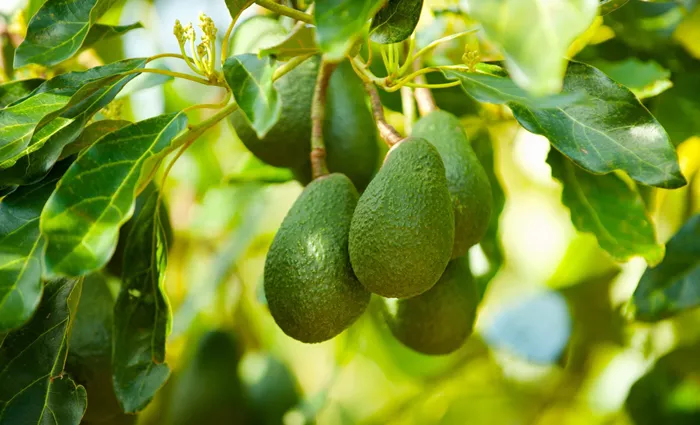Avocado tree bonsai is a fascinating project that allows you to bring a touch of the tropics into your home. Instead of discarding the avocado pit after enjoying the fruit, you can embark on a journey to create a beautiful miniature tree. With some patience and the right techniques, you’ll have a unique bonsai that’s not only a conversation piece but also a rewarding horticultural achievement.
Gathering the Materials
1. Avocado Pit: Select a fresh, undamaged avocado pit. Ripe avocados are best, as the pits are more likely to sprout. Make sure to clean the pit thoroughly, removing any remaining fruit flesh.
2. Container: You’ll need a small container for germinating the pit. A plastic cup or a small pot works well. The container should have drainage holes to prevent waterlogging.
3. Toothpicks and Water: You’ll use 3 – 4 toothpicks to suspend the pit over water. The water should be clean and room – temperature.
4. Soil: Once the pit sprouts, you’ll need a well – draining potting mix. A combination of regular potting soil, perlite, and sand in equal parts can create an ideal growing medium for the avocado bonsai.
5. Small Bonsai Pot: When it’s time to transplant the sprouted avocado into a bonsai pot, choose a pot that is small but proportionate to the size of the tree. Bonsai pots come in various materials like ceramic, clay, or plastic. Clay pots are great for their breathability.
Germinating the Avocado Pit
1. Insert Toothpicks: Carefully insert 3 – 4 toothpicks around the middle of the avocado pit. The toothpicks should be evenly spaced.
2. Suspend over Water: Fill a glass or container with water. Suspend the avocado pit over the water with the pointed end up and the wider, flat end down. The toothpicks should rest on the rim of the container, keeping the bottom of the pit submerged in water.
3. Patience and Observation: Place the container in a warm, well – lit area, but out of direct sunlight. Change the water every few days to keep it fresh. After a few weeks, you should start to see the pit crack open, and a small root will emerge from the bottom. Eventually, a sprout will grow from the top.
Transplanting the Sprouted Pit
1. Prepare the Soil: Fill a small pot with the prepared potting mix. Moisten the soil slightly so that it’s damp but not soggy.
2. Gently Remove the Pit: Once the root is a few inches long and the sprout has grown to a decent height (about 6 – 8 inches), carefully remove the pit from the water and gently remove the toothpicks.
3. Plant in the Pot: Make a small hole in the center of the soil in the pot. Place the avocado pit in the hole with the root down and the sprout above the soil. Gently cover the root and part of the pit with soil, leaving the sprout exposed.
Training and Pruning for Bonsai – like Growth
1. Pinching and Pruning: As the avocado tree grows, you can start pinching off the tips of the branches to encourage bushier growth. Use sharp, clean pruning shears to remove any overly long or wayward branches. This helps to shape the tree and maintain its miniature size.
2. Wiring (Optional): If you want to further shape the avocado bonsai, you can use bonsai wire. Gently wrap the wire around the branches, being careful not to damage the bark. You can then bend the branches into the desired shape. However, be cautious as avocado branches can be brittle.
3. Leaf Trimming: To maintain the bonsai’s scale, you can trim larger leaves. This not only gives the tree a more proportionate look but also redirects the plant’s energy to other parts of the tree.
Caring for Your Avocado Bonsai
1. Light: Avocado bonsai need bright, indirect light. A south – or west – facing window is ideal. If the light is too intense, the leaves may get sunburned.
2. Watering: Keep the soil evenly moist. Water when the top inch of the soil feels dry. Over – watering can lead to root rot, while under – watering will cause the tree to wilt.
3. Fertilization: Use a balanced, water – soluble fertilizer during the growing season (spring and summer). Dilute the fertilizer to half the recommended strength and apply it every 2 – 3 weeks. This provides the necessary nutrients for healthy growth.
4. Temperature: Avocado bonsai prefer warm temperatures between 65 – 75°F (18 – 24°C). Protect the tree from cold drafts and extreme temperature changes.
Transplanting the Seedling
Once the seedling has grown to about 6 to 8 inches tall, it’s time to transplant it into a larger pot. Choose a pot with drainage holes and fill it with a well-draining bonsai soil mix. Gently remove the seedling from its original container, taking care not to damage the roots. Plant it in the new pot, ensuring the soil level is the same as before. Water thoroughly to settle the soil.
Pruning and Shaping
Pruning is essential for shaping your avocado tree bonsai. As the tree grows, pinch back the tips of new growth to encourage branching and a fuller canopy. Remove any dead or weak branches to maintain the tree’s health and shape. For more advanced shaping, you can use bonsai wire to gently bend and direct the branches. However, be cautious not to damage the bark.
Conclusion
Creating an avocado tree bonsai is a fulfilling and enjoyable project. From a simple avocado pit, you can nurture a beautiful, unique bonsai. By following the steps of germination, transplanting, training, and proper care, you’ll have a living work of art that can be enjoyed for years. It’s a wonderful way to connect with nature and express your creativity, all within the comfort of your own home.


